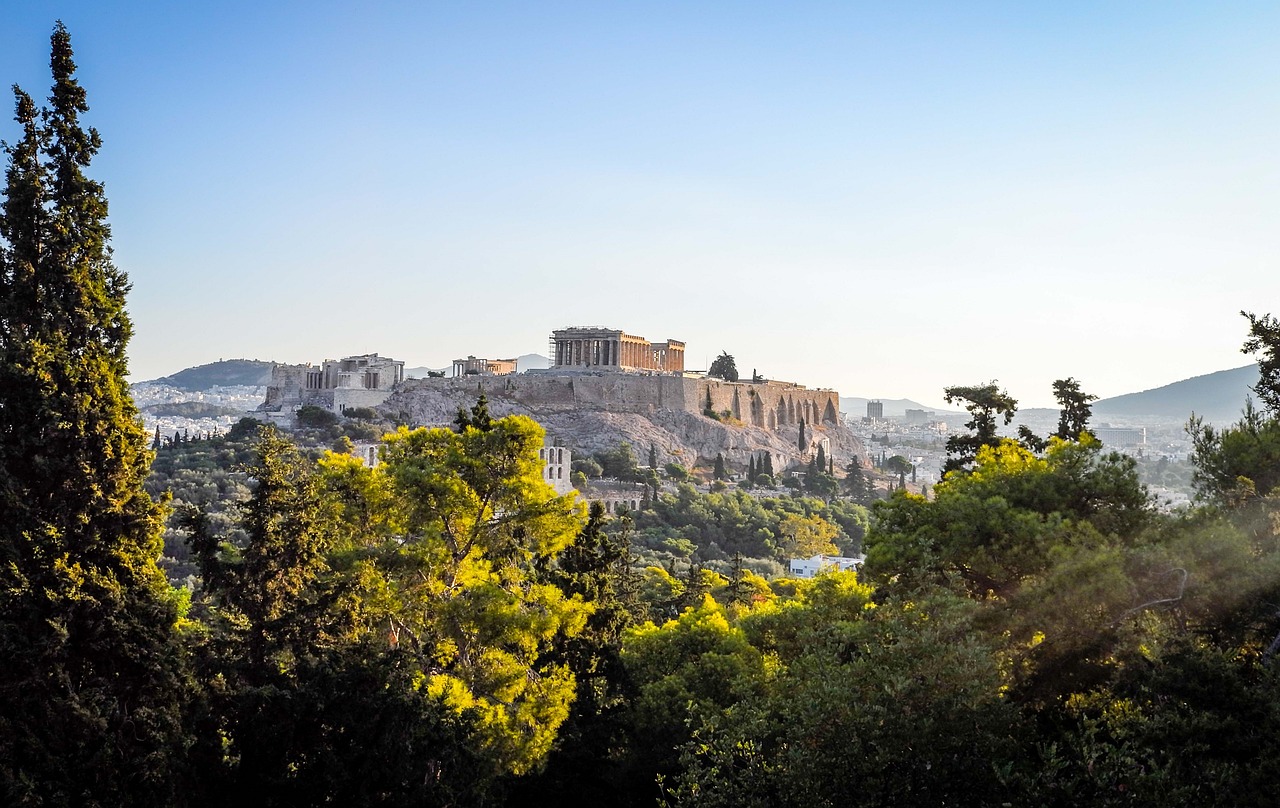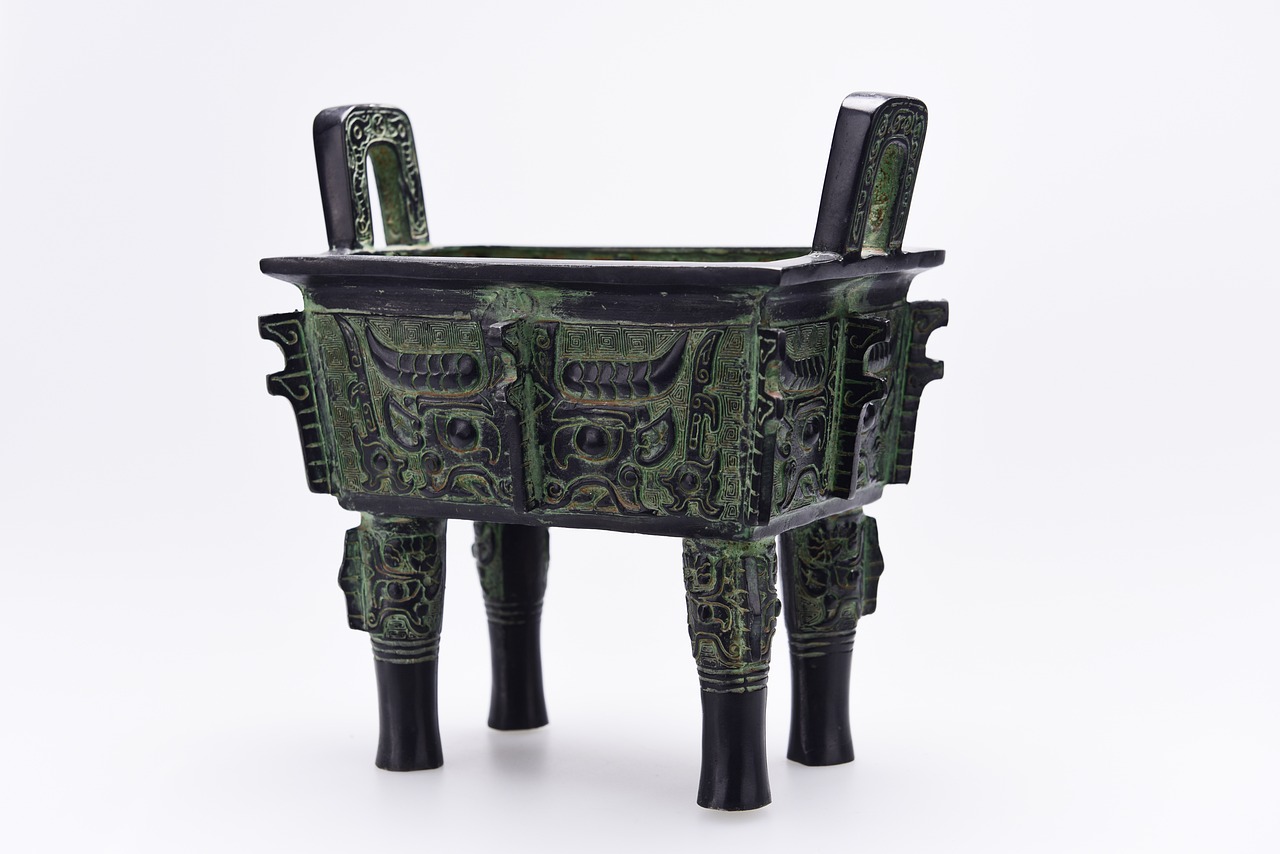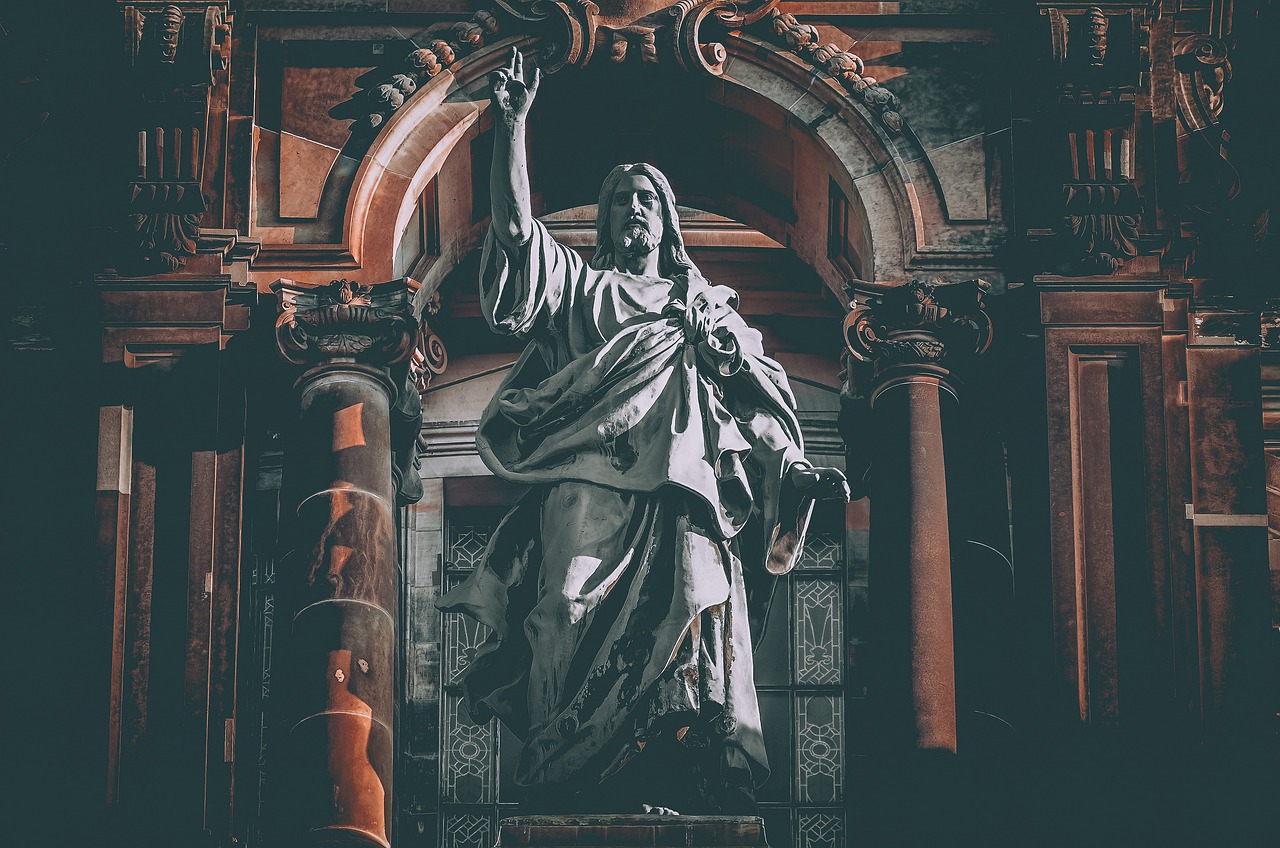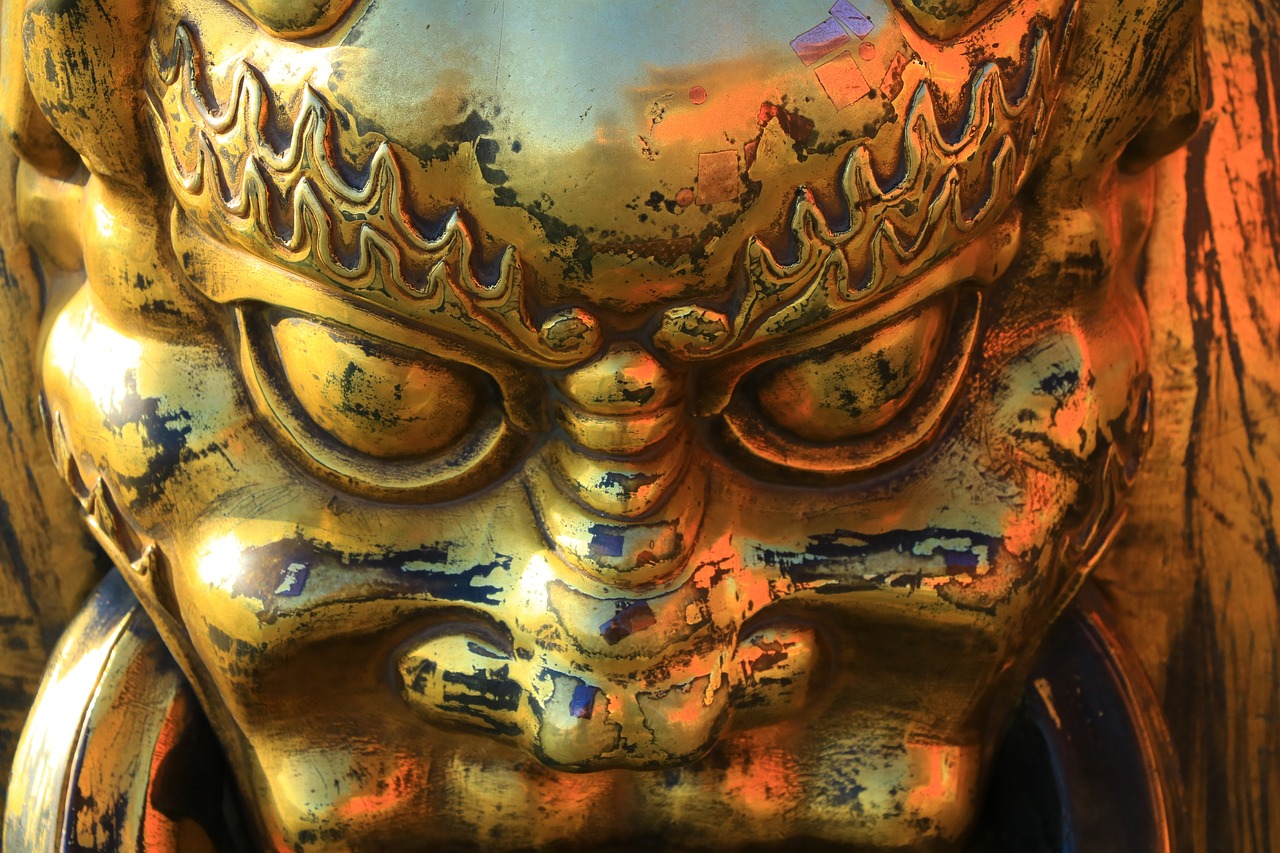Ancient Polytheism vs. Monotheism - A Comparative Analysis
Ancient Polytheism and Monotheism represent two fundamental religious frameworks that have significantly influenced human societies throughout history. While both systems involve beliefs in divine entities, their core tenets and practices diverge in profound ways, shaping cultures, civilizations, and individual worldviews.
Ancient Polytheism, originating in various ancient cultures, embraced the concept of multiple deities, each governing distinct aspects of life. These gods and goddesses were often characterized by unique powers and personalities, interacting with humans and influencing natural phenomena. In contrast, Monotheism, exemplified by religions like Judaism, Christianity, and Islam, revolves around the belief in a single, all-encompassing deity, emphasizing unity and omnipotence.
In the realm of rituals and worship, Polytheistic traditions involved elaborate ceremonies, sacrifices, and offerings to appease and honor different gods. These practices were integral to daily life and societal functions, reflecting a complex tapestry of religious observances. On the other hand, Monotheistic worship centers on prayer, moral conduct, and adherence to commandments as means of establishing a direct connection with the singular divine entity.
The impact of these belief systems on society has been profound. Polytheistic civilizations often exhibited diverse social structures and artistic expressions influenced by their pantheon of gods. In contrast, Monotheistic faiths have played pivotal roles in shaping legal frameworks, ethical standards, and cultural norms, imparting a sense of moral guidance and societal order.
Views on the afterlife vary significantly between Polytheism and Monotheism. Polytheistic beliefs encompass a wide array of interpretations, ranging from underworld realms to cycles of reincarnation. In contrast, Monotheistic religions commonly emphasize a singular judgment day and the concept of eternal reward or punishment based on individual actions.
Historically, Polytheistic societies demonstrated a level of tolerance towards diverse beliefs and practices, fostering cultural exchange and syncretism. Conversely, Monotheistic faiths, rooted in the idea of exclusive truth, have at times led to conflicts and tensions due to the rejection of other deities and belief systems.
While Polytheistic religions often underwent evolution and adaptation, incorporating new deities and rituals over time, Monotheistic faiths have maintained doctrinal purity and resisted significant changes to their core beliefs. In the modern era, ancient Polytheistic beliefs are studied for their cultural insights, while Monotheistic religions continue to shape global events, moral debates, and individual perspectives in profound ways.

Origins and Beliefs
Ancient Polytheism and Monotheism are two distinct religious systems that have shaped human societies. This article explores their differences in beliefs, practices, and impacts on culture and civilization.
Ancient Polytheism originated in diverse cultures with multiple deities, each governing different aspects of life. These societies believed in a pantheon of gods and goddesses, each associated with specific domains like love, war, fertility, and nature. The Greeks worshipped Zeus as the king of the gods, while the Egyptians revered Osiris as the god of the afterlife. In contrast, Monotheism believes in a single all-powerful deity, such as the God of Abraham in Judaism, Christianity, and Islam. Followers of these monotheistic religions adhere to the belief in one supreme being who created and governs the universe.
Polytheistic religions view gods as individual beings with specific powers and personalities, often interacting with humans in myths and legends. These deities were anthropomorphic, embodying human-like traits and emotions. In contrast, Monotheism emphasizes the oneness and omnipotence of God, with a singular divine entity guiding believers towards moral conduct and spiritual enlightenment. The monotheistic concept of divinity transcends human limitations, portraying God as beyond comprehension and infinite in power.
Polytheistic worship involves various rituals, ceremonies, and offerings to appease different gods, seeking blessings and protection for various aspects of life. Temples, sacrifices, and festivals were integral to these practices, reflecting a deep connection between humans and the divine. On the other hand, Monotheistic practices focus on prayer, moral conduct, and adherence to commandments as ways to honor and connect with the one true God. Worship in monotheistic religions is centered on spiritual communion and seeking guidance from the divine.
Polytheistic societies often had complex social structures and diverse religious practices that influenced art, governance, and daily life. The belief in multiple gods shaped cultural norms, artistic expressions, and political systems, fostering a rich tapestry of traditions and beliefs. In contrast, Monotheistic beliefs have played significant roles in shaping legal systems, ethics, and cultural norms in many civilizations. The monotheistic emphasis on moral values and divine commandments has influenced societal structures, legal frameworks, and ethical standards.
Polytheistic traditions have diverse beliefs about the afterlife, ranging from underworld realms to concepts of reincarnation and rebirth. The idea of an afterlife varied among different polytheistic cultures, reflecting a complex tapestry of beliefs about the soul's journey beyond death. In contrast, Monotheistic religions commonly teach about a singular judgment day and eternal reward or punishment based on individual actions. The monotheistic concept of afterlife emphasizes accountability, justice, and the eternal consequences of one's deeds.
Historically, polytheistic societies displayed tolerance towards diverse beliefs and gods, fostering cultural exchange and syncretism. The acceptance of multiple deities allowed for religious diversity and mutual respect among different communities. However, Monotheistic faiths sometimes led to conflicts due to the belief in exclusive truth and the rejection of other deities. The monotheistic insistence on the supremacy of one true God has at times clashed with polytheistic beliefs, leading to religious tensions and ideological confrontations.
Polytheistic religions often evolved over time, incorporating new deities and practices to adapt to changing circumstances and cultural influences. The flexibility of polytheistic belief systems allowed for the integration of new gods and rituals, reflecting a dynamic and evolving religious landscape. In contrast, Monotheistic faiths have maintained doctrinal purity and resisted significant changes to core beliefs over centuries. The monotheistic emphasis on divine revelation and unchanging truths has preserved the fundamental tenets of these religions across generations.
In the modern world, ancient polytheistic beliefs are often studied for their cultural insights, mythological richness, and historical significance. Scholars and enthusiasts explore the diverse pantheons of gods and goddesses to understand ancient worldviews and religious practices. Meanwhile, monotheistic religions continue to shape global events, moral debates, and individual worldviews in diverse ways. The influence of monotheistic beliefs on ethics, politics, and personal spirituality remains profound in contemporary societies.
Have questions about ancient polytheism and monotheism? Check out the common queries below:
- 1. What are the main differences between polytheism and monotheism?
- 2. How did polytheistic societies view the afterlife?
- 3. Why did monotheistic faiths sometimes lead to conflicts?
- 4. How have polytheistic religions adapted over time?
- 5. What is the significance of monotheistic beliefs in modern society?

Concept of Divinity
Polytheistic religions, such as those in ancient civilizations like Greece and Egypt, perceive divinity as a multifaceted concept. In polytheism, numerous gods and goddesses are worshipped, each possessing unique attributes and powers. These deities are often depicted in human or animal form, embodying various aspects of nature, emotions, and phenomena. Followers of polytheistic faiths engage in rituals and offerings to honor and seek favor from specific gods for different purposes.
In contrast, monotheistic religions, including Judaism, Christianity, and Islam, uphold the belief in a single, omnipotent God. Monotheism emphasizes the unity and indivisibility of the divine being, attributing all power and authority to this singular entity. Followers of monotheistic faiths perceive God as the ultimate source of creation, morality, and guidance, viewing the deity as the sole object of worship and devotion.

Rituals and Worship
Rituals and worship play a central role in both polytheistic and monotheistic religions, albeit in different forms and practices. In polytheistic traditions, rituals are often elaborate and diverse, reflecting the multitude of deities worshipped. Ceremonies, sacrifices, and offerings are common ways to honor and appease various gods, each associated with specific aspects of life. Temples dedicated to different deities serve as places for communal worship and rituals, fostering a sense of connection to the divine.
On the other hand, monotheistic worship revolves around a personal relationship with the singular deity. Prayer, meditation, and contemplation are key practices that believers engage in to communicate with God and seek guidance. The emphasis is on moral conduct, adherence to commandments, and acts of charity as expressions of faith and devotion. Monotheistic worship often takes place in synagogues, churches, or mosques, where congregants gather to pray and participate in communal rituals.
While polytheistic rituals are often tied to specific deities and their attributes, monotheistic worship focuses on the unity and transcendence of God. The rituals in monotheistic faiths are designed to deepen the spiritual connection between the individual and the divine, emphasizing the importance of faith, humility, and obedience to God's will. The simplicity and directness of monotheistic worship reflect the belief in a single, all-encompassing deity who is omnipresent and omniscient.

Impact on Society
Ancient Polytheism and Monotheism are two distinct religious systems that have shaped human societies. This article explores their differences in beliefs, practices, and impacts on culture and civilization.
Ancient Polytheism originated in diverse cultures with multiple deities, each governing different aspects of life. Monotheism, in contrast, believes in a single all-powerful deity, such as the God of Abraham in Judaism, Christianity, and Islam.
Polytheistic religions view gods as individual beings with specific powers and personalities, often interacting with humans. Monotheism emphasizes the oneness and omnipotence of God, with a singular divine entity guiding believers.
Polytheistic worship involves various rituals, ceremonies, and offerings to appease different gods. Monotheistic practices focus on prayer, moral conduct, and adherence to commandments as ways to honor and connect with the one true God.
Polytheistic societies often had complex social structures and diverse religious practices, influencing art, governance, and daily life. The belief in multiple deities contributed to a rich tapestry of cultural expressions, where each god governed a specific aspect of life, leading to a multifaceted society. This diversity often resulted in a tolerance for various beliefs and practices, promoting cultural exchange and artistic innovation. In contrast, monotheistic beliefs have played significant roles in shaping legal systems, ethics, and cultural norms in many civilizations. The emphasis on a single deity has sometimes led to more uniform societal structures and moral codes, impacting the governance and social fabric of communities in profound ways.
Polytheistic traditions have diverse beliefs about the afterlife, ranging from underworld realms to reincarnation. Monotheistic religions commonly teach about a singular judgment day and eternal reward or punishment based on individual actions.
Historically, polytheistic societies displayed tolerance towards diverse beliefs and gods, fostering cultural exchange. Monotheistic faiths sometimes led to conflicts due to the belief in exclusive truth and the rejection of other deities.
Polytheistic religions often evolved over time, incorporating new deities and practices to adapt to changing circumstances. Monotheistic faiths have maintained doctrinal purity and resisted significant changes to core beliefs over centuries.
In the modern world, ancient polytheistic beliefs are often studied for their cultural insights, while monotheistic religions continue to shape global events, moral debates, and individual worldviews in diverse ways.

Views on Afterlife
Polytheistic traditions have a diverse array of beliefs regarding the afterlife, reflecting the multifaceted nature of their pantheons. In some ancient polytheistic religions, the afterlife was envisioned as a realm of shadows or a place where souls journeyed to be judged by various deities. For example, in Egyptian mythology, the soul's journey through the underworld was a crucial aspect of the afterlife belief, with the weighing of the heart against the feather of truth determining one's fate.
Conversely, other polytheistic cultures embraced the concept of reincarnation, where souls were believed to be reborn into new bodies based on their actions in previous lives. This cyclical view of life and death was prevalent in religions such as Hinduism and certain Greek philosophical traditions, emphasizing the eternal nature of the soul's journey through multiple lifetimes.
On the monotheistic side, beliefs about the afterlife are often more streamlined and focused on a singular judgment day where individuals are held accountable for their deeds. In Judaism, Christianity, and Islam, the concept of heaven and hell plays a central role, with the promise of eternal reward for the righteous and punishment for the wicked based on divine judgment.
While polytheistic views on the afterlife tend to be diverse and intricate, monotheistic religions offer a more unified and definitive perspective on the ultimate fate of individuals after death. The contrast between the cyclical nature of reincarnation and the linear progression towards a final judgment highlights the distinct theological frameworks that shape these differing beliefs about the afterlife.

Tolerance and Conflict
When examining the historical dynamics between ancient polytheistic and monotheistic societies, a notable distinction arises in their approaches towards tolerance and conflict. Polytheistic civilizations often exhibited a remarkable level of tolerance towards diverse beliefs and deities, fostering an environment conducive to cultural exchange and mutual respect. The acceptance of multiple gods allowed for a more inclusive religious landscape, where individuals could worship various deities without significant repercussions.
Conversely, the monotheistic faiths, with their emphasis on the exclusive truth embodied in a single deity, sometimes found themselves at odds with polytheistic cultures. The belief in one supreme God led to the rejection of other gods and religious practices, occasionally resulting in conflicts and tensions between different belief systems. Monotheistic religions, driven by the conviction of a singular divine truth, could perceive the worship of multiple gods as a challenge to their core tenets, leading to instances of intolerance and clashes.
While polytheistic societies embraced the diversity of religious expressions and beliefs, monotheistic faiths often grappled with the concept of religious exclusivity, which, at times, fueled conflicts and ideological confrontations. The differing approaches towards tolerance and conflict between ancient polytheism and monotheism highlight the intricate interplay between religious beliefs, societal norms, and cultural interactions throughout history.

Evolution and Adaptation
Polytheistic religions have a fascinating history of evolution and adaptation, constantly changing to reflect the needs and beliefs of their followers. These religions often incorporated new deities and practices, sometimes merging with other belief systems to form syncretic traditions. The adaptability of polytheistic faiths allowed them to thrive in diverse cultural environments, absorbing and integrating elements from different societies.
On the other hand, monotheistic faiths have typically maintained a more rigid doctrinal structure, resisting significant changes to core beliefs over time. The emphasis on the singular nature of God and the exclusivity of truth has led to a less flexible approach to adaptation compared to polytheistic religions. Monotheistic traditions prioritize the preservation of fundamental teachings and principles, often viewing deviations as heretical or unacceptable.
While polytheistic religions embraced a more fluid and inclusive approach to evolving beliefs, monotheistic faiths focused on preserving the purity and integrity of their foundational doctrines. This difference in adaptation strategies has influenced the development and continuity of these religious systems throughout history, shaping their interactions with changing societies and cultures.

Modern Interpretations
In the modern world, ancient polytheistic beliefs are often studied for their cultural insights, providing a window into the diverse mythologies and practices of past civilizations. Scholars and enthusiasts delve into the intricate pantheons of gods and goddesses, exploring the symbolic meanings and societal roles assigned to each deity. These ancient belief systems offer a rich tapestry of stories and rituals that offer valuable insights into the values and worldviews of our ancestors.
On the other hand, monotheistic religions continue to exert a profound influence on global events and individual lives. The monotheistic concept of a single, all-powerful deity has shaped the moral compass of billions of people worldwide. The teachings and scriptures of monotheistic faiths guide believers in matters of ethics, spirituality, and interpersonal relationships, providing a framework for moral debates and philosophical discussions.
Moreover, monotheistic religions play a significant role in shaping cultural norms and legal systems in many societies. The monotheistic emphasis on divine commandments and moral conduct has influenced the development of laws and governance structures in various civilizations. Concepts such as justice, equality, and accountability are often rooted in monotheistic principles, impacting societal values and norms.
Frequently Asked Questions
- What is the main difference between Ancient Polytheism and Monotheism?
Ancient Polytheism worships multiple deities, each with specific powers, while Monotheism believes in a single all-powerful deity.
- How do Polytheistic and Monotheistic religions differ in their views on the afterlife?
Polytheistic traditions have varied beliefs about the afterlife, while Monotheistic religions commonly teach about a singular judgment day and eternal reward or punishment.
- What are the key practices in Polytheistic worship compared to Monotheistic practices?
Polytheistic worship involves rituals, ceremonies, and offerings to multiple gods, whereas Monotheistic practices focus on prayer, moral conduct, and adherence to commandments.
- How have Polytheistic societies and Monotheistic faiths influenced societal structures differently?
Polytheistic societies often had complex social structures influenced by diverse religious practices, while Monotheistic faiths played significant roles in shaping legal systems, ethics, and cultural norms.



















